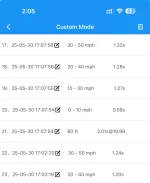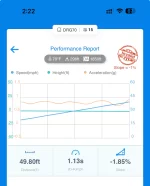- Joined
- Mar 7, 2020
- Messages
- 6,903
- Reaction score
- 9,767
- Location
- Naples, FL
- Cars
- Model S Plaid, Odyssey
- Air DE Number
- 154
- Referral Code
- 033M4EXG
I thought that the Gravity Dream Edition, despite its 242 more horsepower, had the same maximum torque -- 909 ft-lbs in Launch Mode -- as the Gravity Grand Touring. But this "InsideEVS" article gives the Dream Edition torque as 1,107 ft-lbs.
I think Lucid itself was the source of the 909 figure, but I'm wondering if something changed on the way to final DE production. I thought it odd that the torque figures were identical, as the Dream uses the larger GT rear motor at both ends of the car. Any idea which is correct? (The Hagerty drag race video still gives the Gravity Dream torque as 909 ft-lbs.)
I think Lucid itself was the source of the 909 figure, but I'm wondering if something changed on the way to final DE production. I thought it odd that the torque figures were identical, as the Dream uses the larger GT rear motor at both ends of the car. Any idea which is correct? (The Hagerty drag race video still gives the Gravity Dream torque as 909 ft-lbs.)








